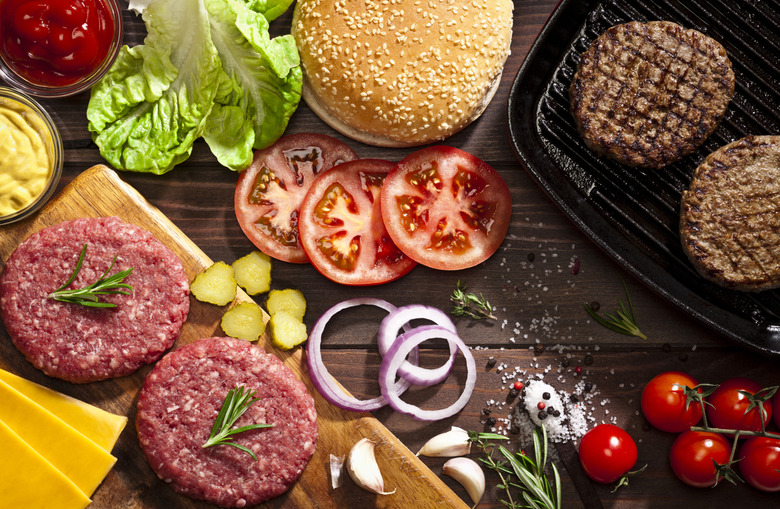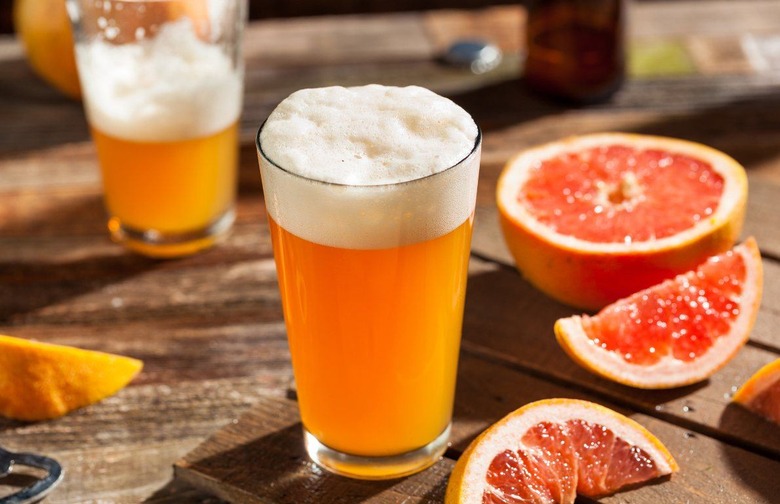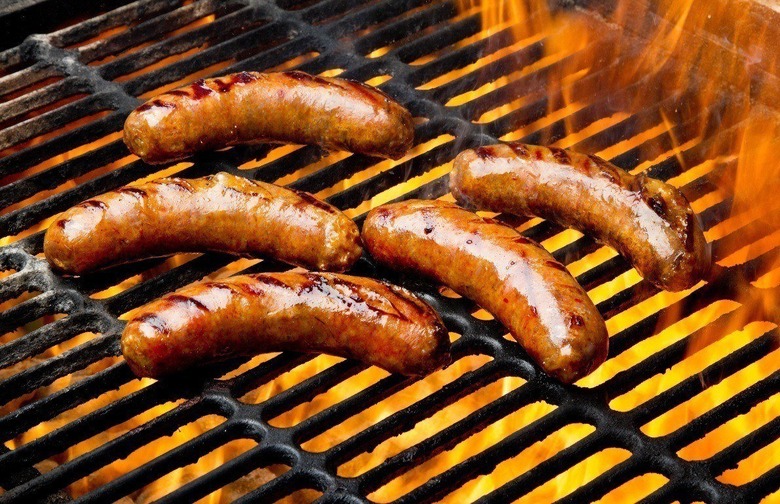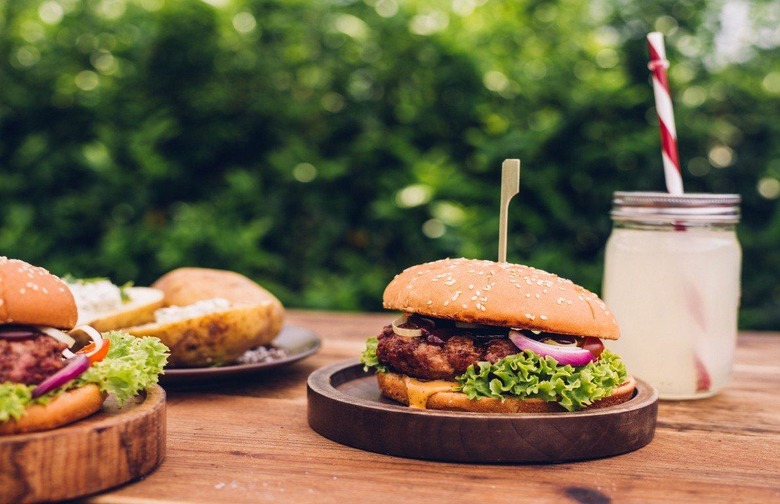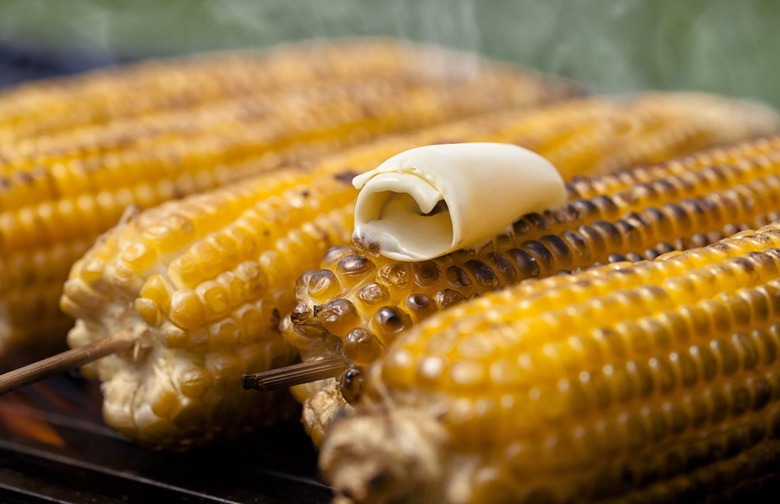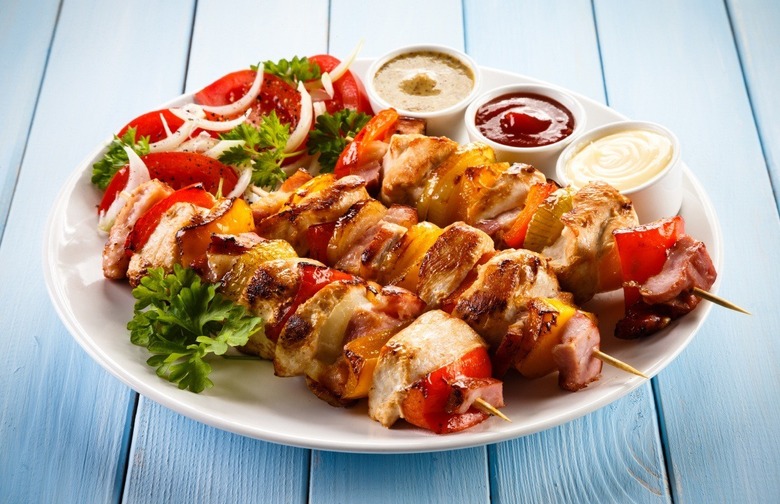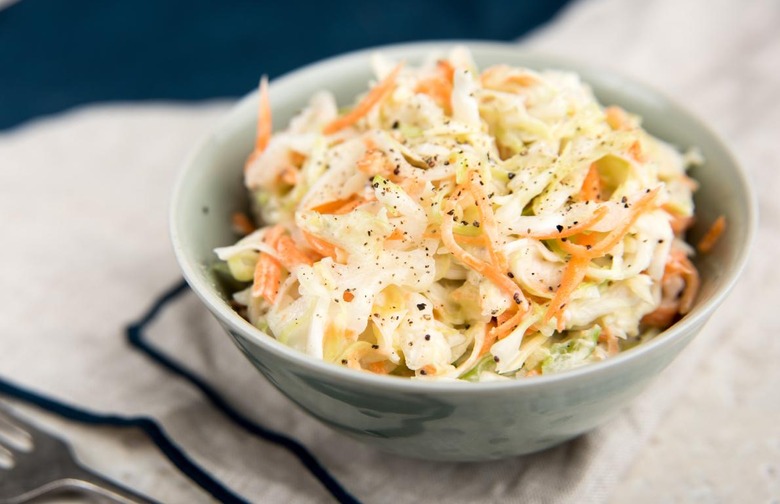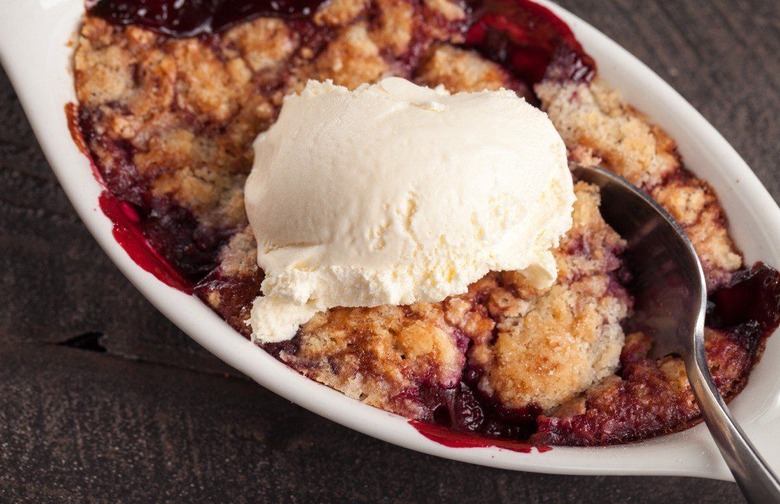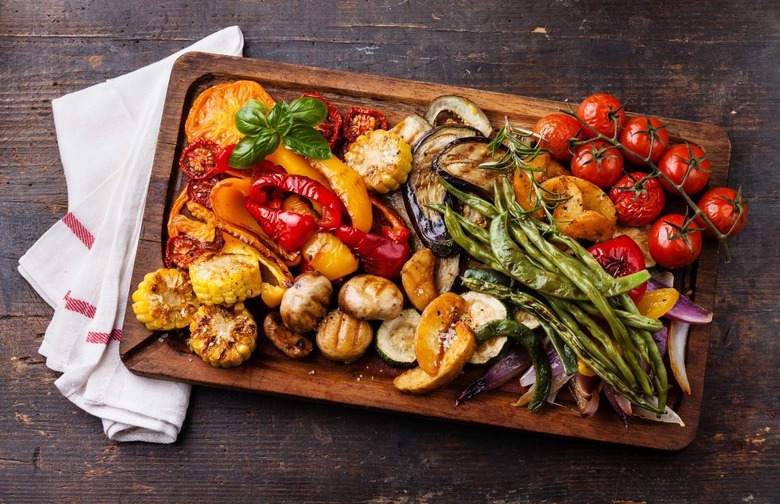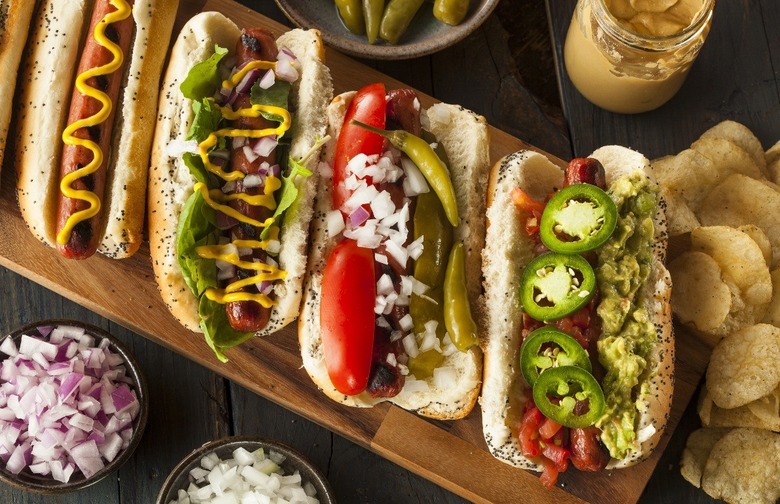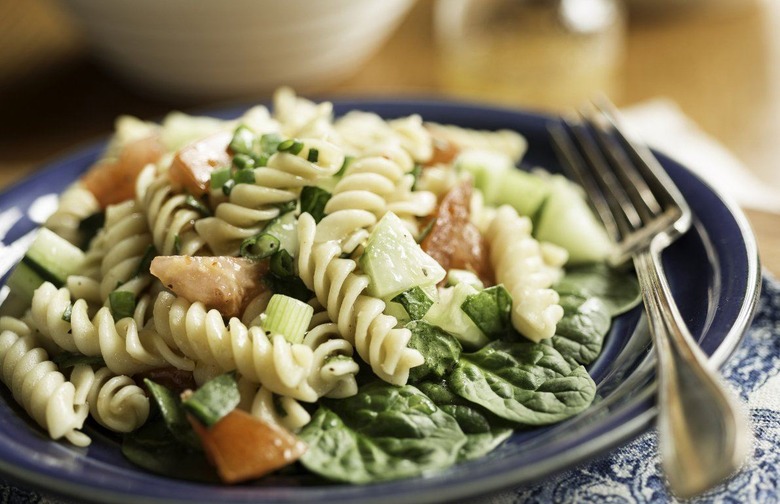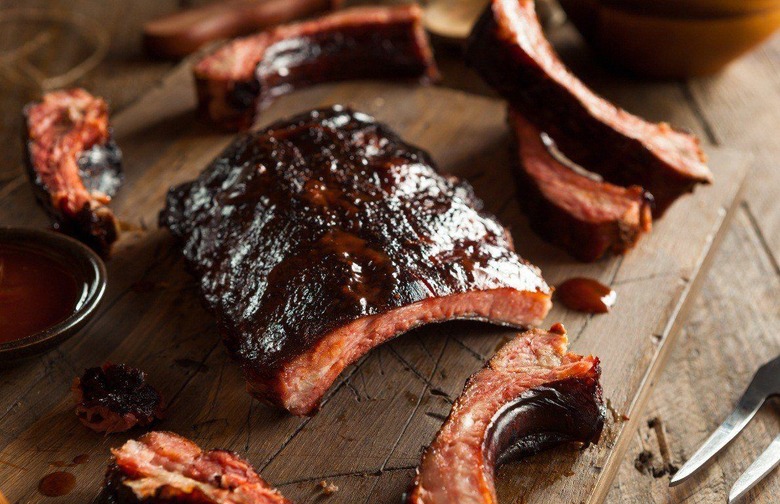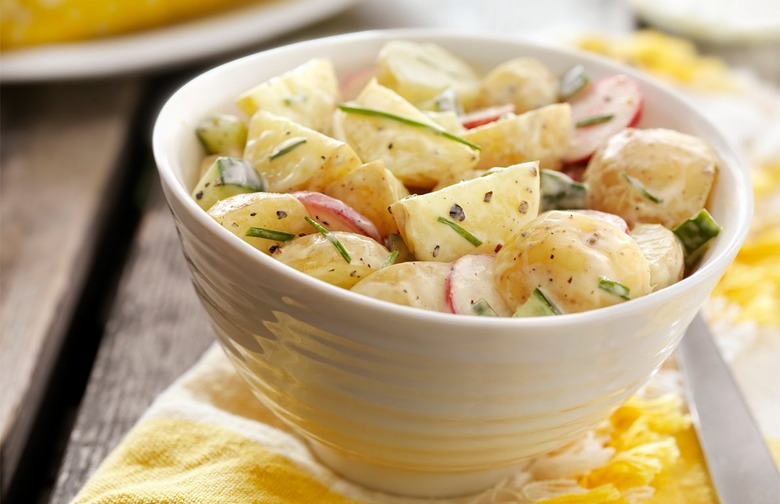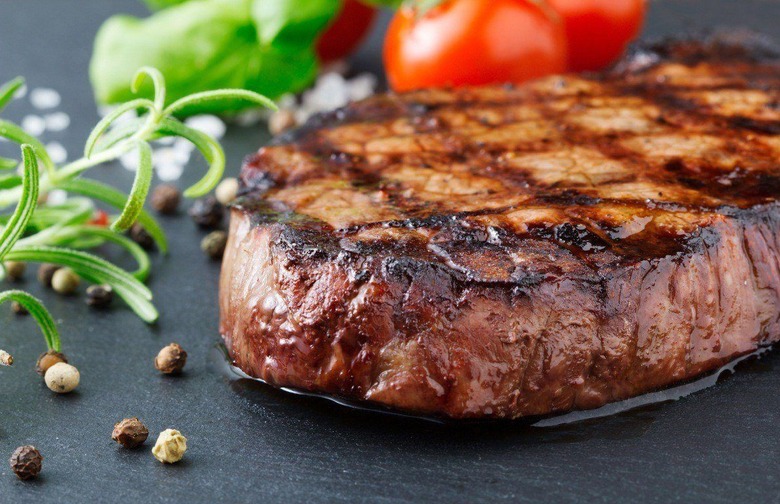How Many Calories Are In Your Summer Cookout Favorites? Slideshow
'Tis the season to be grilling — and we know you're going to be spending at least a dozen nights this summer outside by the flames. Between the beer, the music, and the warm summer heat, cookouts are a guarantee for a good time.
Grills have been bringing families, coworkers, and old friends together for centuries with their ability to char veggies, pineapple, and skirt steak just perfectly (with minimal cooking expertise required). But along with all of that, they've been bringing some serious food indulgence to your summers, maybe without you even knowing it.
At a cookout, the decadent dishes are set up buffet-style, and they seem to be everywhere. A cherry pie is sitting on the deck, steaks are being served hot off the flames, fresh-cut salads are waiting on the picnic table... It can be tough to visualize just how much you're really eating at these otherwise wholesome gatherings.
Don't get too caught up in trying to calculate the numbers — we've done that work for you. Instead of entering your next cookout blind, discover which cookout favorites are hiding the extra calories nestling in your waistline, before you've already eaten them.
Beer
This one totally depends on the beer you choose. But regardless of which brand or whether or not the can is labeled "light," beer always carries at least 100 calories per can (and usually tallies up to more). It's not the calories themselves that are the problem — it's that they are empty calories, meaning they don't provide nutritional value. One hundred calories of carbs from beer is a completely different story from eating a 100-calorie banana, as far as your stomach is concerned.
It's easy to get caught up in pounding back can after can, but those cans can add up quickly. Just two beers down and you've already consumed more calories than you would have eating some McDonald's burgers!
The verdict: 150-200 calories per can
Bratwurst/Sausage
Not all sausages are created equal — especially when it comes to calories. Some meats, such as the pork most bratwurst is made from, contain more fat than others. A bratwurst sausage contains 25 grams of fat — the same number as a whole cup of French fries.
A better bet is to stick to chicken sausage or choose a bratwurst that mixes fatty pork with a leaner cut of beef.
The verdict: 290 per sausage link
Burgers
Ah, the cheeseburger: a calorie-laden classic. A typical hamburger patty averages 260 calories with 90 percent lean meat. To keep the count down, buy a lower-fat cut of ground beef before grilling. The lowest fat content for burgers is 96 percent lean — but be careful! Family members may be able to taste the difference.
If you want your meat still tasting juicy but want other ways to cut the number down, you could always go bun-less. The bun on its own usually clocks in at around 120 calories. So either go at your patty with a knife and fork or reach for a healthier burger bun alternative, such as mushrooms, cauliflower, or even just some lettuce.
The verdict: 400-600 per burger
Buttered Corn
I know what you're thinking: But corn is a vegetable! You're right — a majority of the calories from the corn at your cookout come from the butter you slather on the ear after it's cooked. An ear of corn on its own (with no butter) contains around 74 calories. Add the butter afterwards, and you're adding another hundred from the dense, concentrated fats.
The verdict: 174 per ear
Chicken Kebabs
These skewers of grilled chicken and veggies are a fairly nutritious option when it comes to cookout eats. Cooking chicken on the grill is a smart way to keep the fat content on the low end and banish the extra carbs you're eating to your burger bun, where they belong.
One skewer has a serving of chicken and a serving of vegetables — so as long as you limit your portion to one or two sticks, you're all set so far as your diet is concerned.
The verdict: 310 per skewer
Coleslaw
The classic side dish gets a pretty good reputation for being the "healthy" option at a cookout dinner. But if you're being choosy about your diet and opting between coleslaw and French fries, you should maybe just grab a couple of fried potatoes and call it a day.
Sure, coleslaw is made with lots of cabbage, carrots, and other nutritious vegetables. However, once those crunchy veggies are loaded up with mayo, oil, and other fatty foods, just one cup of coleslaw packs almost 300 calories!
The verdict: 291 per cup
Fruit Cobbler
Despite the fact that it's made with fruit, this dessert is still, well, a dessert. It's also not the healthiest dessert out there. Peach cobbler, a summer favorite, is often made with peaches stored in syrup and coated in added refined sugars, rather than with fresh-cut peaches containing only natural sugars.
Even though the fruit is there, deep down under layers of butter and flour, you're not any better off calorically than you would be eating a slice of chocolate cake.
The verdict: 350 calories per slice
Grilled Vegetables
These fibrous gems are your go-to for healthy grilling. With all the vitamins and minerals vegetables have to offer, the healthy fats from the olive oil used to grill, and the delectable flavors from the blend of strong spices and charred edges, this summer side won't disappoint your taste buds or your blood pressure.
The verdict: 100 per cup
Hot Dogs
Hot dogs should make you skeptical for more reasons than just their calories — the pink sausages have been known to contain questionable ingredients and have gone through some grotesque processes during their manufacture.
However, despite the off-putting ingredient list, these wiener sausages are actually pretty balanced when it comes to nutrition. The sausage itself contains a good portion of protein and fats, while the bun adds carbs.
How to upgrade the health of your hot dog? Use a whole-grain bun and top your dog with pickles and other veggies. Your gut (and the rest of your body) will thank you.
The verdict: 270 per hot dog with a bun, no toppings
Pasta Salad
This side dish makes a hefty complement to your burger. Pasta and either oil or mayo are the two main ingredients. Add in the olives and some cheese and you've got a dish loaded with extra carbs and fats.
With so many calorically dense ingredients, the recommended serving size is small — around half a cup.
The verdict: 360 calories per half cup
Pork Ribs
A half-rack of ribs goes by too quick — for just one rib, without any sauce, we're talking almost 100 calories. A tablespoon of barbecue sauce has around 30 calories. So how many ribs are you eating?
Pork ribs are undoubtedly delicious. Who doesn't have a cherished memory of savoring a rack of ribs as the pork juices dripped down your chin? Ribs are juicy, messy, and unfortunately loaded with fat. There's a reason they taste so rich — if you're going to a cookout every week, you might want to just stick to grabbing a couple of ribs and pairing them with a large serving of vegetables.
The verdict: 670 per half-rack with sauce
Potato Salad
Between the starchy white potatoes, egg yolks brimming with saturated fat, and greasy mayo, you knew this one wasn't going to be pretty. And with the fats in your burger and fries, the last thing you needed was an extra couple of servings. If you're watching the numbers this season, keep the portions small on this creamy classic side dish.
The verdict: 357 per cup
Steak
The favorite of dads and chefs everywhere, steak is known for its rich, juicy flavor and its extreme levels of satisfaction. There's a reason the meat leaves you feeling so stuffed: One typical serving of rib-eye (approximately 8 ounces, half of an 11-inch steak on the grill) has over 600 calories.
Of course, the calorie count depends on the steak cut. Some cuts of meat carry more fat than others — if you're watching your intake, lower-calorie cuts of meat include an eye round roast and a sirloin tip side steak.
The verdict: 660 per 8 ounces
